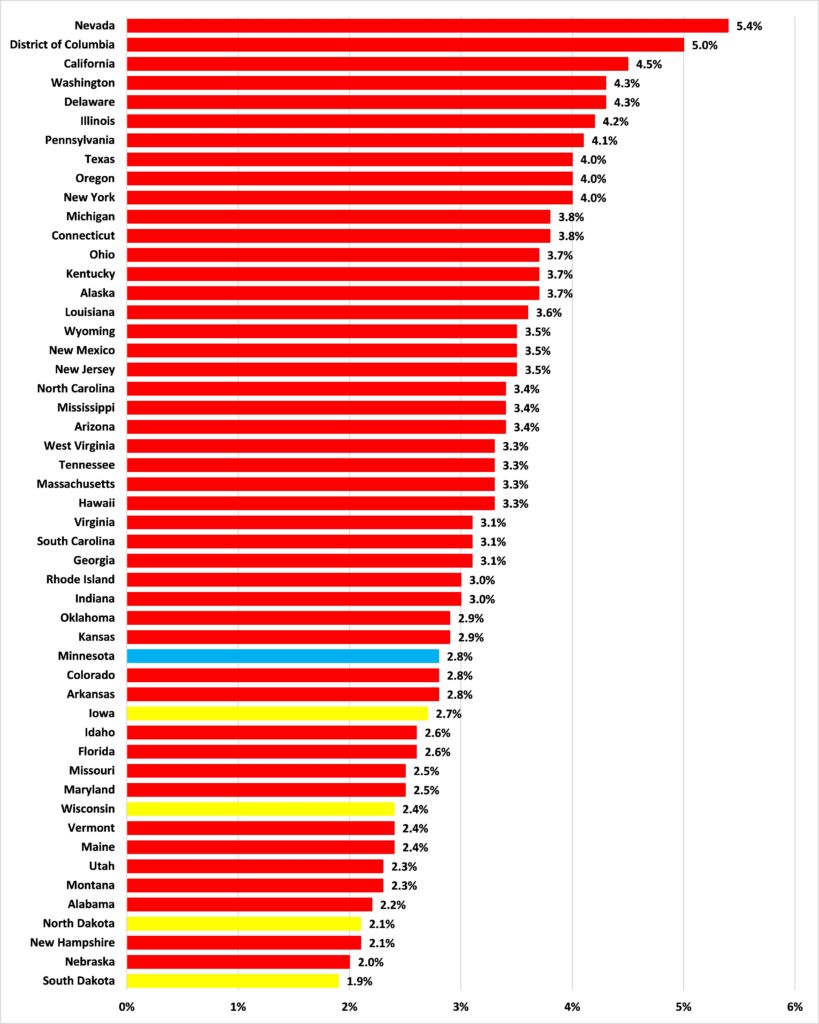About that labor shortage…
Recently, I wrote about the Chamber of Commerce’s new 2023 state of business retention and expansion in Minnesota report. Its key finding was that businesses were reluctant to expand in Minnesota. Specifically:
Survey respondents ranked Minnesota’s high state tax rates and lack of available workers as the top two barriers that prevented businesses from expanding in Minnesota. Businesses and site selectors described that overall business climate and hiring issues have led some companies to expand outside of Minnesota in recent years.
In my previous piece, I looked at how the outcome of the last legislative session — $10 billion of tax hikes over the next four years — will only make those tax concerns worse. But what about that labor shortage?
If our state’s employers are short of workers, there are two obvious sources of additional ones in the short to medium term. One is to get more of the people in the state working. The other is to get more people into the state to work.
How many Minnesotans aren’t working?
You have likely heard about Minnesota’s low unemployment rate. According to Bureau of Labor Statistics data shown in Figure 1, this stood at 2.8% in April, the joint seventh lowest in the United States, albeit higher than in each of its neighbors, highlighted in yellow, and up from 2.3% in April 2022.
Figure 1: Unemployment rate, April 2023

But the unemployment rate only counts those people who are unemployed and looking for work, and then only as a ratio of the “Civilian labor force,” which is the sum of those people both employed and those unemployed and looking for work. If you are unemployed and not looking for work, you are not counted as part of the “Civilian labor force.”
If we subtract the number for the “Civilian labor force” from the number for the “Civilian non-institutional population,” we get a number for those people who are not in the labor force at all. If we then add that number to the number of people unemployed, we get a “true” number of the state’s population who are not working.
Figure 2 shows this number of “true” unemployment as a share of the “Civilian non-institutional population” for April 2023. Minnesota compares well nationally with a rate of “just” 33.9%, or 1.5 million people. Even so, that represents a substantial pool of potential workers.
Figure 2: ‘True’ unemployment rate, April 2023

It is especially important to tap this pool because, contrary to popular myth, data show that the decline in the employment ratio — the share of a population actually employed — has fallen by more for 20-to-24-year-olds in Minnesota than for any other group since 2019. If we are to address Minnesota’s labor shortage we must, then, start here, by aiming to bring these people back into the labor force and back into employment.
Unfortunately, here, too, the results of the recent legislative session were disappointing. The payroll tax enacted to fund the Paid Family and Medical Leave scheme will drive a wedge between what employers pay for labor and what workers receive for it, which will restrain employment growth. So, too, will expanded welfare measures such as the child tax credit. While Minnesota’s numbers for its “true” unemployment rate are relatively good, they might be about as good as it gets.